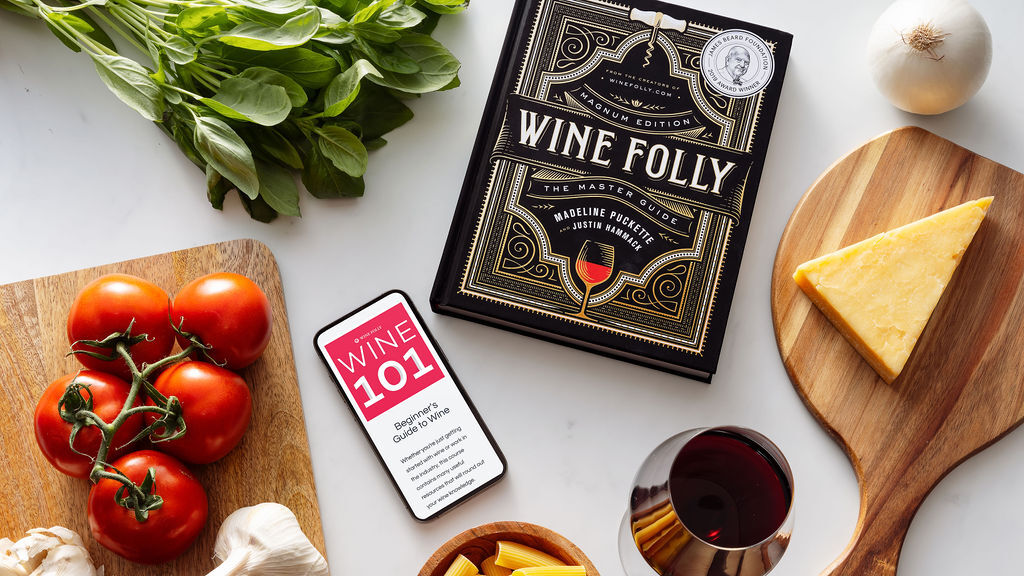
Champagne vs Prosecco: What are the differences, and why does Champagne cost so much more?
The quick answer is simple: wine can only be called Champagne when it originates from the Champagne region in France. Prosecco is from Italy. But there’s more than just the name – this is the full story.
The price difference is partially due to the production method used to make each wine. Champagne is much more time-intensive to produce and thus more expensive. However, there are more differences between Champagne and Prosecco than you might think!
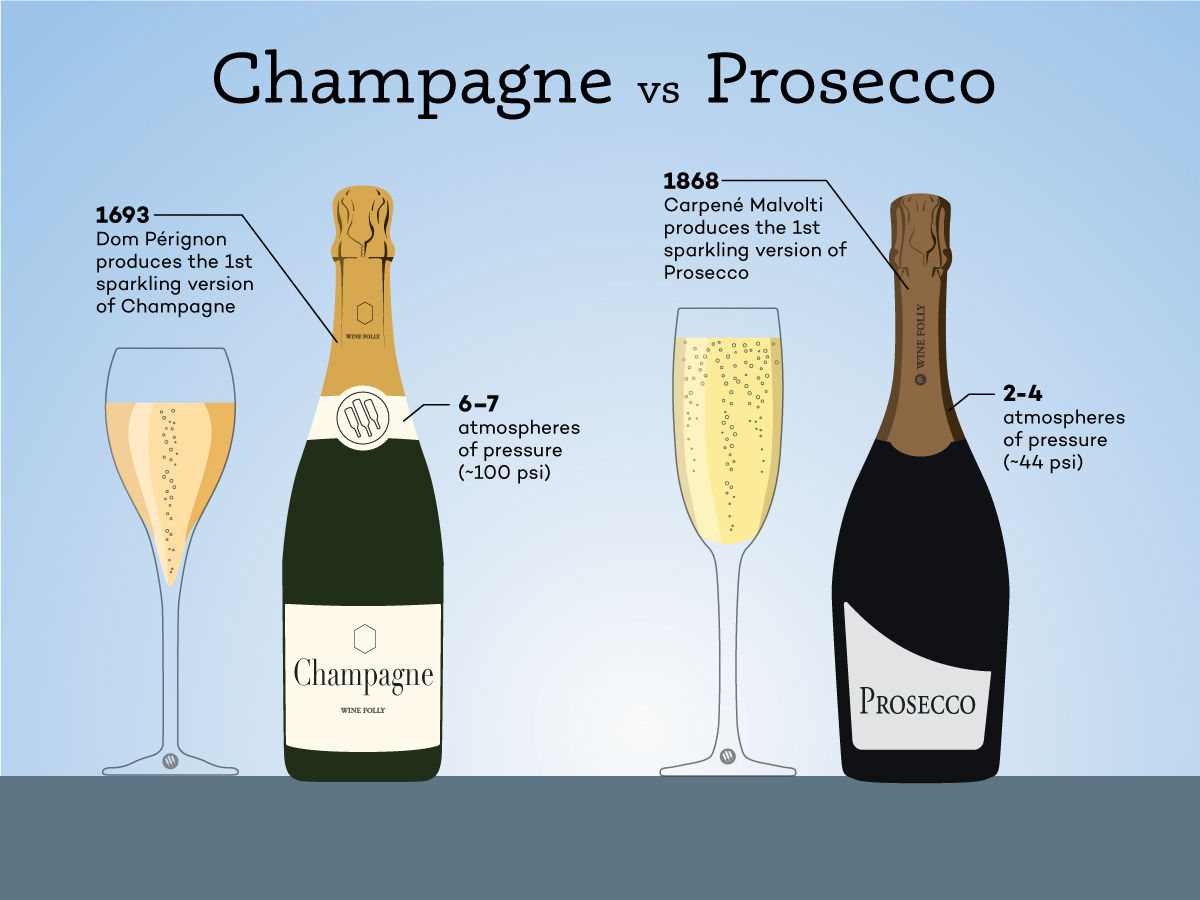
Another factor that affects price is market demand and positioning.
Champagne’s perception as a luxury commands higher prices. On the other hand, Prosecco’s perception as a value sparkler means it’s more affordable. Still, exceptional Prosecco wines exist. Look in the Conegliano Valdobbiadene region (and affordable, too!).
Let’s explore some more differences between Champagne vs Prosecco.

Champagne
Champagne comes from the Champagne region of France, which is about 80 miles (130 km) Northeast of Paris.
- Champagne is primarily made from Chardonnay, Pinot Noir, and Pinot Meunier grapes.
- Champagne is made using a costly method called the “traditional method”.
- A standard 5 oz serving of Brut Champagne has 91–98 calories and 1.8 g of carbohydrates (12% ABV).
- You should expect to pay $40 for a good entry-level Champagne.

Champagne Tasting Notes
Since carbonation develops under high pressure, Champagne has fine, persistent bubbles. Fine Champagne wines often exhibit almond-like flavors, with subtle notes of orange zest and white cherry.
The aging process of yeast particles (called lees), often gives Champagne strange cheese rind aromas. However, these aromas smell more like toast, brioche, or biscuit in finer, vintage Champagnes. Yum!
Champagne Food Pairing
Pair Champagne with shellfish, raw bar, pickled vegetables, and crispy fried appetizers. Also, try it with potato chips! This pairing may sound low-brow, but it’s exceptionally delicious!

Prosecco
Prosecco is a sparkling wine made primarily in Veneto, Italy close to Treviso which is about 15 miles (24 km) North of Venice.
- Prosecco is primarily made from the Glera grape, formerly known as ‘Prosecco’.
- Produced using an affordable method called the ‘Tank Method‘.
- A standard 5 oz serving of Extra-Dry Prosecco has 91–98 calories and 2.6 g carbohydrates (11% ABV).
- You should expect to pay under $20 for a good entry-level Prosecco.
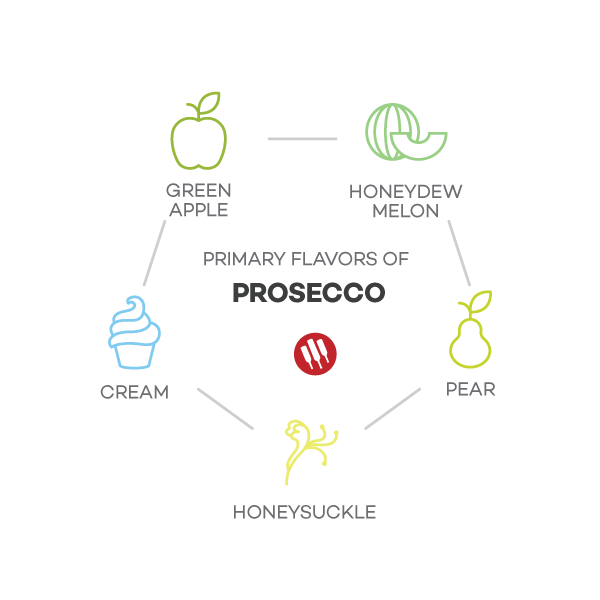
Prosecco Tasting Notes
Prosecco tends to have boisterous fruit and flower aromas (a product of the Glera grape). Because wines age in large tanks with less pressure, Prosecco has lighter, frothy bubbles that don’t last as long. Still, the aromas in Prosecco smell fabulous. Fine bottles of Prosecco offer up aromas of tropical fruits, banana cream, hazelnut, vanilla, and honeycomb.
Prosecco Food Pairing
Prosecco leans more towards the sweeter end of the spectrum and, for this reason, makes a great match with cured meats, fruit-driven appetizers (like prosciutto-wrapped melon), and Asian cuisine. Try Prosecco with Pad Thai for a great pairing!
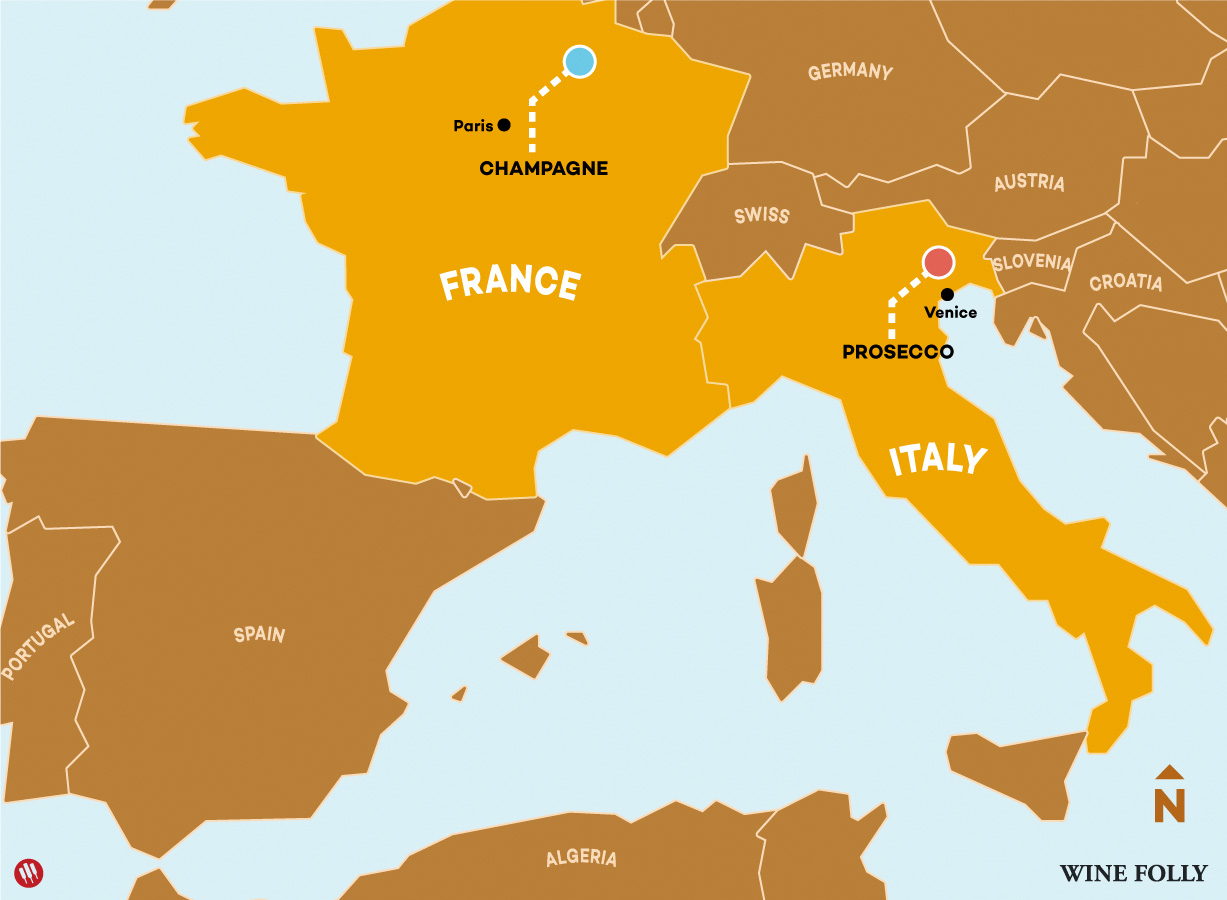
Champagne vs Prosecco Regions
When we put both regions on a map we see that Champagne comes from a much more northerly climate than Prosecco. Thus, Champagne grapes tend to ripen with higher acidity.
Still, the Valdobbiadene region in Italy, where Prosecco is made, has a unique microclimate which is much cooler than the surrounding area (it rains a lot in Valdobbiadene!). This helps produce crisp and delicious sparkling wines.
Ultimately, these wines offer unique experiences—explore both to find your favorite!
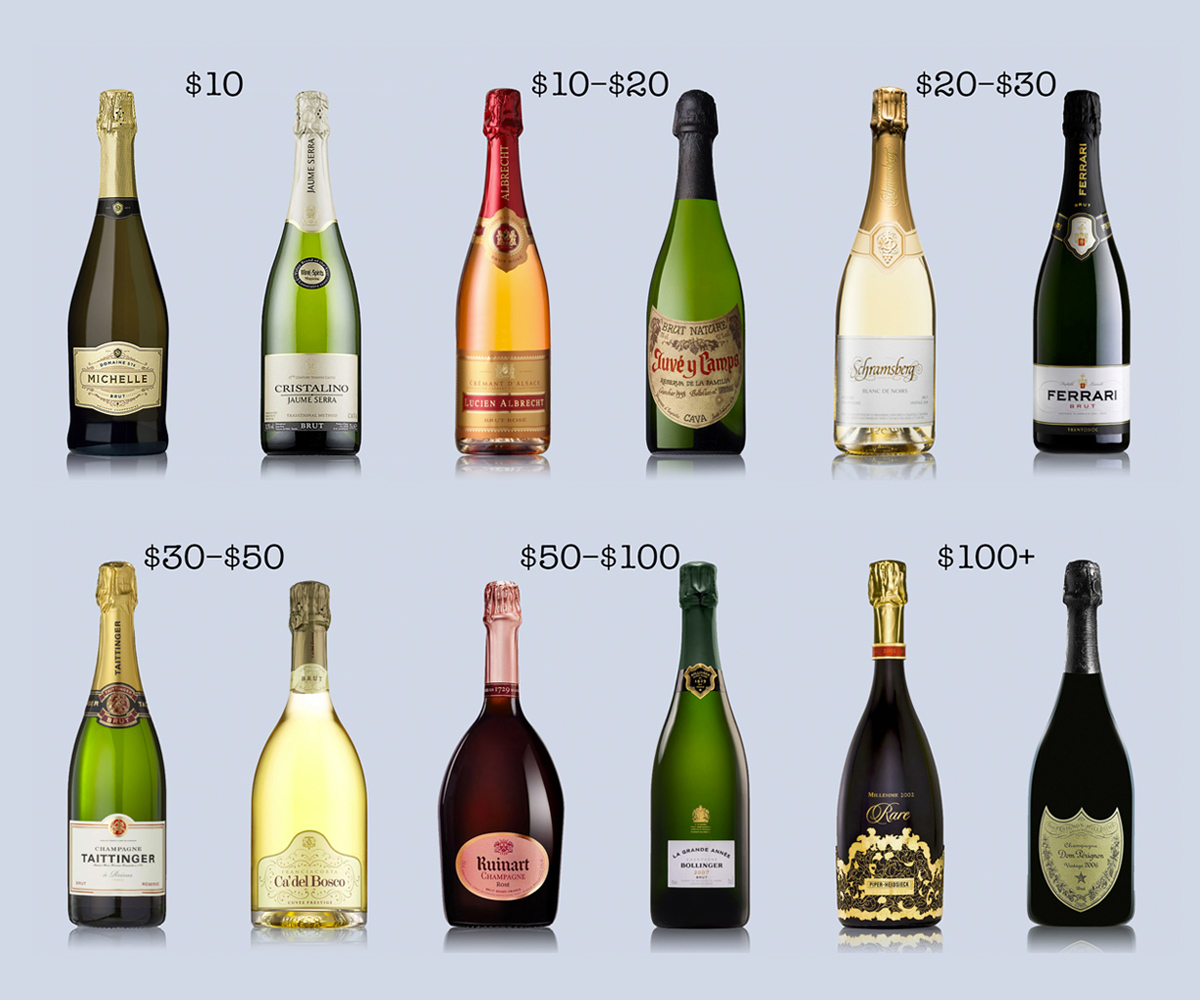
Great Bubbly In Your Budget
It doesn’t matter if you spend $10 a bottle or $100 a bottle. Find the best sparkling wines in your budget.
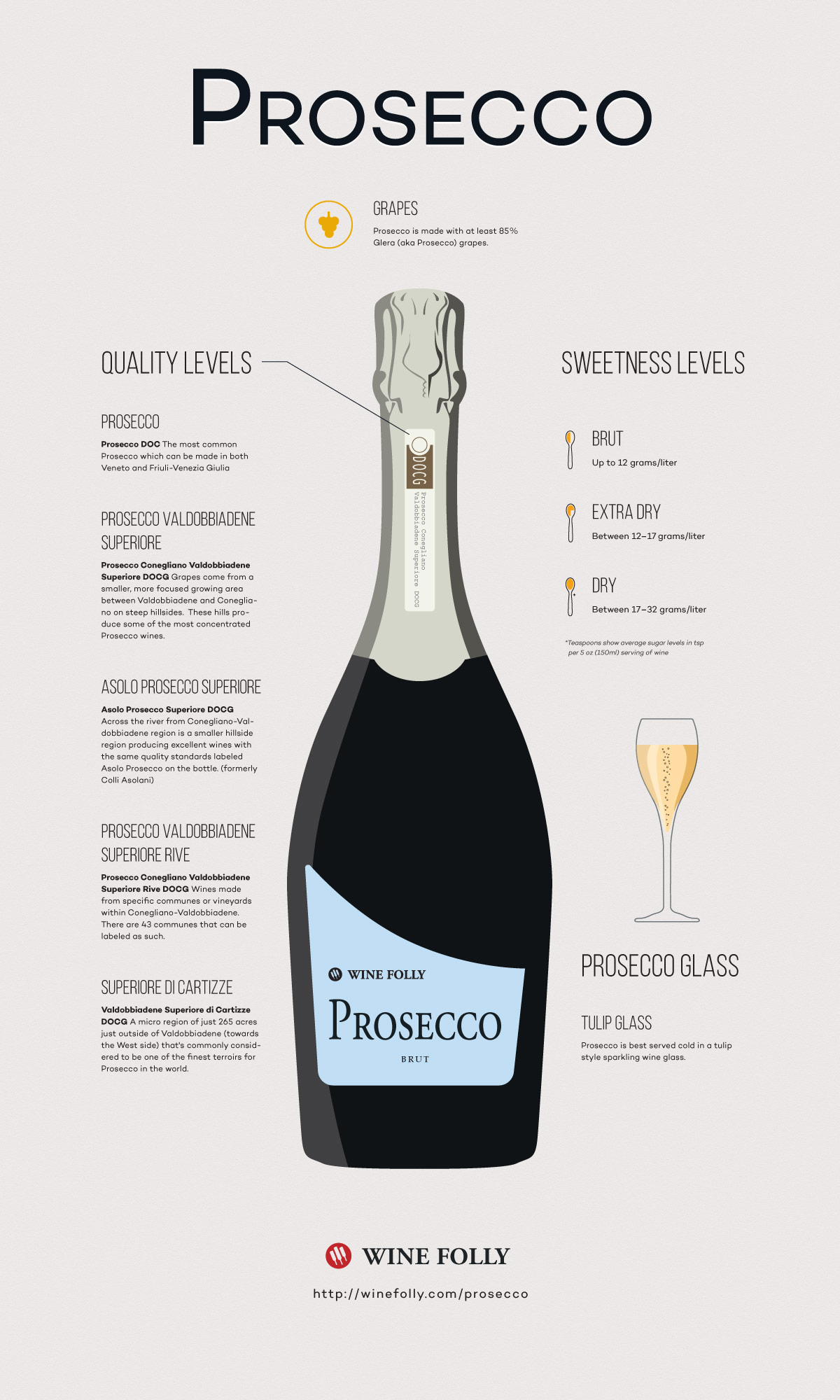
Discover The Best Prosecco
The best Prosecco isn’t even called Prosecco! Find out more about Prosecco quality levels.
